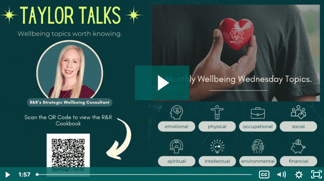December is Seasonal Affective Disorder Awareness Month. This disorder, also known as S.A.D., is a type of depression that is linked to seasonal changes, particularly the reduction in daylight hours during the fall and winter. Most individuals with S.A.D. experience symptoms starting in the fall that persist into the winter months, causing them to feel more moody, lethargic, and generally less interested in activities they usually enjoy.
While there is no way to prevent S.A.D., you can take steps to manage the symptoms before they worsen. These steps include light therapy, which involves exposure to a lightbox that mimics natural sunlight, and spending more time outdoors during daylight hours. Regular physical exercise, maintaining a healthy diet, and seeking professional counseling or therapy can also be beneficial. In some cases, medication may be prescribed to help alleviate the symptoms.
To delve deeper into this topic, watch this month's Taylor Talks video, where we discuss preventive measures that can be taken to make your winter a more pleasant experience.
Watch this month's video here.
Reach out to our experienced Strategic Wellbeing Consultant, Taylor Hahn, to discuss the next steps. Many of our other employer groups have found this approach to be incredibly successful.


